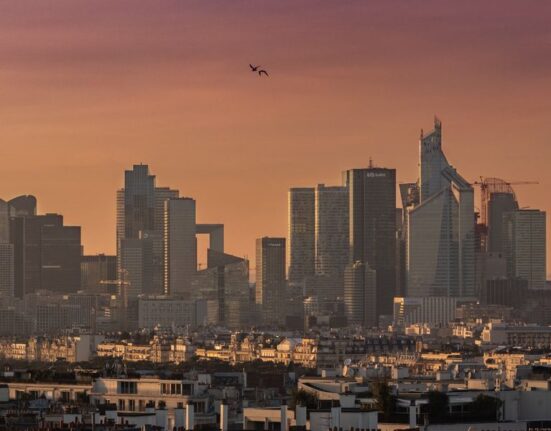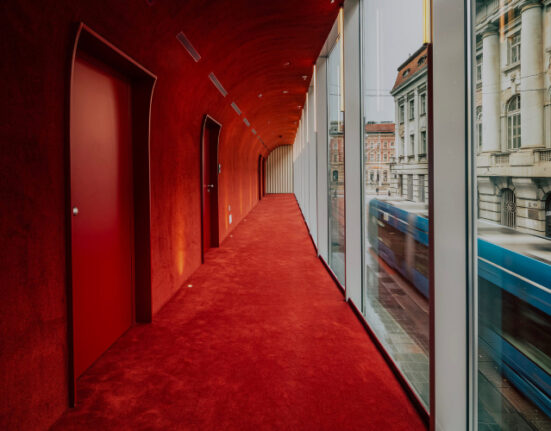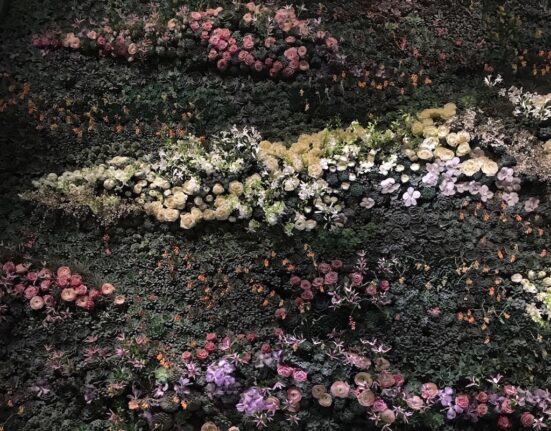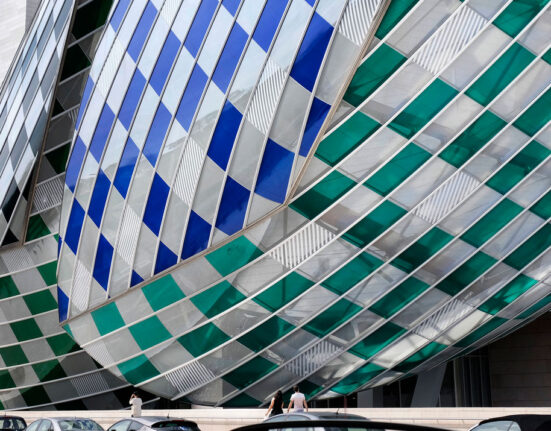With high-end art fairs proliferating, dealers have many choices to make, starting with the location of the event.
Another decision comes with creating their booth with the larger fair context in mind. Should they complement the galleries around them or offer a somewhat contrasting selection?
For the New York edition of the European Fine Art Fair (known as TEFAF), running from May 12 to 16 at the Park Avenue Armory, the contemporary art dealer Gisela Capitain is leaning toward contrast.
The fair emphasizes modern and contemporary art and design objects much more so than the older, original edition of TEFAF in Maastricht, the Netherlands, but it still offers a handful of dealers of antiquities and jewelry that help make it a diverse showcase. The Gilded Age aesthetic of the Armory, completed in 1881, adds an old-fashioned touch that is decidedly absent from convention centers.
“TEFAF being different makes it more interesting,” said Ms. Capitain, who founded Galerie Gisela Capitain in Cologne, Germany, in 1986, pointing out how different the fair is from events like Frieze New York, which takes place a few days later and maintains a more uniform focus on cutting-edge recent work.
Ms. Capitain will show a selection of artists she works with, including the American photographer Christopher Williams, the American multidisciplinary artist Stephen Prina and the Italian textile artist Isabella Ducrot. Ms. Ducrot is represented by the collaged pastel “Big Pot” (2021).
“It’s a good variety, and we like that it’s concentrated,” Ms. Capitain said of the size of the fair, noting that the total number of dealers this year, 91, is about the same number as there were at last year’s New York edition, and a relatively modest amount, compared with some prestige fairs.
She said that because most of the booths were about the same size was also appealing. “You’re not confronted by power games,” Ms. Capitain said of the jockeying for attention among dealers. “You can focus on the work.”
After all, Ms. Capitain added, “New York is the most competitive art market in the world.”
Hidde van Seggelen, a contemporary art dealer based in Hamburg, Germany, who serves as TEFAF’s chairman, said that the smaller size compared with Maastricht — about a third of the dealer total — gave the New York version a different flavor.
“It’s a more local fair, with a strong slate of New York galleries,” said Mr. van Seggelen, who is not showing his own wares this week. He added that among European galleries, France and Italy were particularly well represented.
Mr. van Seggelen said he expected robust collector turnout, partly because of the fair’s timing, pegged to the biggest modern and contemporary sales of the year at Christie’s and Sotheby’s.
“People will visit us and the auctions,” he said.
Thaddaeus Ropac, founder of Thaddaeus Ropac gallery, likened TEFAF New York to “a little jewel box, where the stands are small, so you have to think really carefully what to do.”
The gallery — based in Paris, London, Seoul and Salzburg, Austria — seems to have thought it through successfully. At last year’s TEFAF New York, its stand was dedicated to Ron Mueck, with two works including “Dead Dad,” which sold for more than $2 million to a Montreal museum. (It depicts the artist’s dead father, naked.)
The relaxed pace of the fair leads to productive, repeat visits, Mr. Ropac said. “People come back. It takes a few days.”
His booth this year is a solo presentation of the Vienna-based painter Martha Jungwirth, who recently got her first solo show at the Albertina Museum in Vienna.
Ms. Jungwirth was “overlooked for too long,” Mr. Ropac said, adding that he was particularly keen on museum curators and directors seeing the booth, given previous results at the fair, like the sale of Mr. Mueck’s work.
“We want to make sure that we introduce it to institutions,” he said. “This is why we go.”
David Zwirner — with four spaces in New York, along with branches in Paris, London and Hong Kong — will present paintings by the German-born artist and teacher Josef Albers, perhaps most famous for his “Homage to the Square” series.
The works in the booth will be from his earlier, breakthrough series “Variant/Adobe,” begun in 1947. It includes the oil “Browns, Ochre, Yellow” (1948).
The New York design gallery R & Company has shown at TEFAF New York previously and will be on hand again this year.
“We do five fairs a year, but TEFAF stands out,” said Evan Snyderman, one of the co-founders. “It has the most sophisticated dealers and captures the highest level of collectors.”
Mr. Snyderman said that their selections reflected that context.
“We often hold a piece for a year or longer specifically for TEFAF,” he said.
The R & Company booth will show several pieces by the Philadelphia-based potter Roberto Lugo and other contemporary makers, including the Hudson Valley-based Katie Stout, represented by a ceramic chandelier.
The gallery is giving its space touches of residential décor.
Mr. Lugo’s ceramics will be on purple pedestals, and the booth will also sport a purple carpet. “We like to show things in a living-room environment, which is how people collect,” Mr. Snyderman said.
Works by well-known 20th-century names like Gerrit Rietveld, the Dutch designer, and Marcel Breuer, the Bauhaus master who later designed a former home of the Whitney Museum of American Art, will also be on hand. “We like to mix genres, era and aesthetics,” Mr. Snyderman said.
For TEFAF in particular, he said, the gallery tries to show the “modern masterpieces” that are in the gallery’s wheelhouse.
Among those is “Bonheur-du-jour” (1983), a desk by the French designer Pierre Paulin that Mr. Snyderman called a star attraction in his booth for its quality and rarity. (There are only three known examples, he added.)
Lisson Gallery, which has spaces in London, New York, Los Angeles, Shanghai and Beijing, will show works by the Canadian artist and performer Rodney Graham, the British sculptor and land artist Richard Long and the British Indian sculptor Anish Kapoor, among others. On hand will be Mr. Kapoor’s gouache “Blood and Fire 7” (2019).
The artists on Lisson’s lineup have roots in both Conceptual Art and Minimalism. “That’s the DNA of the gallery,” said Alex Logsdail, the chief executive of Lisson. The gallery was founded by his father, Nicholas Logsdail.
The younger Mr. Logsdail has been on the TEFAF New York gallery selection committee in the past. “I’m biased, but it’s such an elegant fair,” he said. “The smaller size makes it digestible.”
Lisson does multiple fairs throughout the year, which Mr. Logsdail said had a “FOMO aspect to it” — fear of missing out — but also a community bonding element for people in the art world.
“These fairs are one of the times you get to see and spend time with your peers, during the installation period in particular,” he said.
When they can, dealers often try to capture the art world zeitgeist in their booth. After the recent show “Meret Oppenheim: My Exhibition” at MoMA, Di Donna Galleries of New York will devote its booth solely to Ms. Oppenheim’s work.
“Meret is very relevant right now,” said the gallery’s founder, Emmanuel Di Donna. “Every week, I have people coming in to look for female Surrealists.” The gallery specializes in what he called “classic 20th-century art” made until about 1970, with special attention to Surrealism.
“Those artists have a rich iconography and high-quality draftsmanship,” he said of the Surrealists. Ms. Oppenheim in particular, he said, “was unafraid to explore the unconventional.” Three of the objects in the booth were in the MoMA show.
One piece in that booth that displays Ms. Oppenheim’s iconoclastic side is the sculpture “Eichhörnchen (Squirrel)” (1969-70), which looks like a stein of beer that has sprouted a large, bushy squirrel tail. Fur was a recurring motif for the artist, most famously with her 1936 “Object,” a fur-lined teacup, saucer and spoon that became one of Surrealism’s landmark works.
In his gallery on the Upper East Side, Mr. Di Donna has a concurrent show, “Man Ray’s Paris Portraits: 1921-1939.” One of the images on view is “Meret Oppenheim at the Printer’s Wheel (Erotique Voilée)” (1933), showing Ms. Oppenheim naked, though (mostly) tastefully covered by equipment, and smeared with ink.
“It’s such an amazing image,” Mr. Di Donna said.
He added of Ms. Oppenheim, “She defied expectations and inspired a lot of artists.”
Farah Nayeri contributed reporting.







